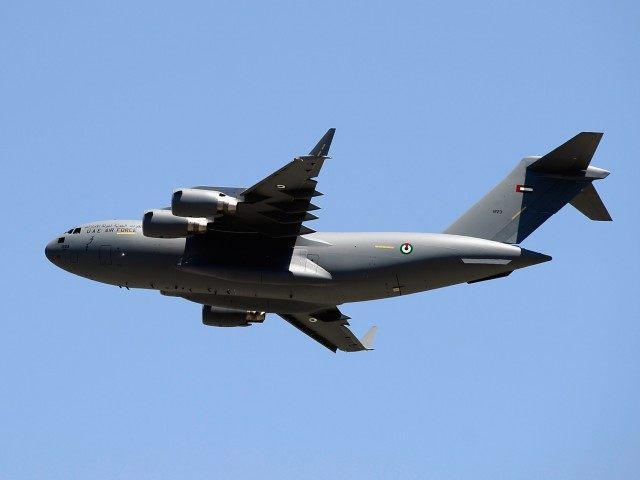Over the last decade, California has lost half of the 35,000 Boeing employees who were working at very good jobs at very good wages. Despite labor troubles, there was always hope that another military spending cycle would eventually fill Boeing’s cavernous aircraft assembly plant in Long Beach. But the dream is about to expire, as Boeing starts auctioning off all the plant’s equipment.
For over seven decades, the 1.1-million-square-foot aircraft assembly plant in Long Beach dominated the city’s landscape and economy. The Douglas Aircraft Company, forerunner to McDonnell Douglas, began supplying the Air Force planes from the site in 1941, just before the U.S. entered World War II. When McDonnell Douglas merged with Boeing in 1997, the C-17 Globemaster III—a monstrous four-engine military cargo jet—was in full production and the local economy was humming.
Once responsible for 50,000 jobs, the C-17 program accounted for only about 14,000 jobs throughout California in 2010. With Military aircraft orders starting to dry up and the Great Recession hammering Long Beach’s economy, Boeing made demands that workers to accept benefit concessions. Although the company was willing to offer a 3.4 percent raise in pay, Boeing wanted a lower company pension contribution and higher employee medical plans co-pays to remain competitive against Europe’s Airbus.
Although U.S. orders for the $240 million plane had ended four years earlier, the company had started to be successful selling C-17s for fleets in Britain, Australia, Canada and Qatar. The Long Beach plant just received a six-plane order from the United Arab Emirates to be delivered in 2012.
But on May 12, 2010, 5,000 members of the United Auto Workers Local 148 answered the call with 80 percent of workers voting against the company offer and going out on strike against Boeing at midnight in their first strike in 25 years. The next day, workers with picket signs lined Lakewood Boulevard 24 hours a day to shout epithets at the company management and “scab” at workers who crossed the picket lines.
“We’ll be out here as long as it takes,” John Hobson, 62, a maintenance mechanic who has worked at the plant since 1980, told the Los Angeles Times at the time. “It could take two weeks or it could take two months.”
Industry analysts were appalled that the UAW would walk out. The strike ended a month later, but talks of shutting down the site took place off and on over the next four years. The plant’s closing last spring ended aircraft manufacturing in California and caused about 3,800 additional jobs losses in and around Long Beach in other industries that benefited from the Boeing work.
Elon Musk’s SpaceX is now building rockets, engines and spacecraft in Hawthorne. The company’s Falcon 9 rocket won U.S. Air Force certification for national security space missions on May 26, breaking the hold on sensitive satellite launches by a Boeing Co.-Lockheed Martin Corp. joint-venture. SpaceX has campaigned for several years to break into what is expected to be a $70 billion combined government and commercial market over the next 15 years, according to the U.S. Government Accountability Office.
Boeing has hired San Diego’s Heritage Global Partners as auctioneer for equipment that includes thousands of pieces of equipment and tooling. Included is a giant Broetje-Automation robotic flexible assembly cell used for assembling fuselage sections for very big aircraft. Another huge item up for bid is a Gemcor Drivmatic fastening machine that drills and installs rivets with a force of 50,000 pounds and then shaves the top so the rivet is flush with the wing’s skin. The robot installs rivets at a rate of six to nine a minute.
Heritage will be accepting sealed bids for Boeing’s equipment through June 23.

COMMENTS
Please let us know if you're having issues with commenting.